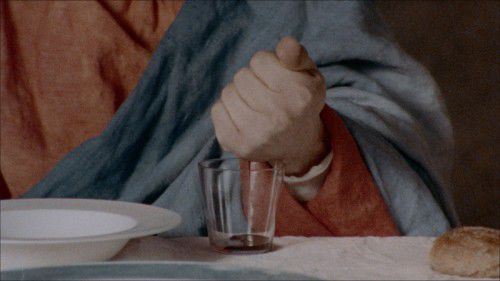WHILE video art frequently proves too esoteric for mainstream artistic consumption, it does comprise a significant portion of new art spectacles.
Typically devoid of a discernible plot or narrative, perhaps the appeal of this discipline lies in its temporality, experimentation of form and intellectual engagement of the eye and on occasion the ear.
Currently on display at Photo Access are two very different video artworks. The first, by Sydney artist Louise Curham, titled “A Film of One’s Own [Archive Fever]”, demonstrates a preoccupation with the ways technology has changed and is changing people.
Along the lines of structuralist-materialist films of the 1970s, Curham’s mesmerising piece is concerned with the materiality of her medium, namely, Super 8 film. She cuts, arranges, and superimposes the film to construct two independent channels of video. The visuals – which project on both screen and the gallery’s wall space – are frenetic and complicated in structure. They unfold in a series of strobes and flickers in all manner of colour, texture and light. It becomes evident that some of the imagery derives from family footage, which also harmonises with the notion that Super 8 film was once the domestic consumer’s camera of choice.
Curham fixates on an analog medium that perhaps seems arcane in a digital age characterised by an unprecedented level of reproducibility – an age where art no longer contains an ‘aura’ (as described by the writings of the cultural critic Walter Benjamin); and age where art is distributed and received instantaneously as digital information.
In the other gallery space, we encounter “The Apostle” a somewhat perplexing film by Finnish artist Juhani Koivumäki, who is currently holding an arts residency in Canberra. This work concerns itself with biblical themes and begins with a reenactment of Christ drawing blood into a cup, which is then consumed by his apostles. Materialising these actions are bodily and visceral sound effects. The camera then zooms in on the character’s (i.e. Christ’s) eye – and we now hear electrical static supplemented by a church bell sound as well as other sonic iconographies. The camera zooms back out, revealing a still image of Da Vinci’s ‘The Last Supper’.
As this description suggests, metaphor and symbolism feature strongly. According to Koivumäki, his work aims to explore “radical ideas of Jesus of Nazareth, which are facing new forms of interpretation under the pressure of the constantly changing needs of contemporary society and its institutions.”
The audiovisual signage manifest in these two video art pieces sits on opposite ends of the spectrum, but the themes traversed and materials utilised should provoke the viewer into asking the right questions: what does this work mean? what does it say?
The post Review / Temporality and engagement in video art appeared first on Canberra CityNews.
![Louise Curham, A Film of One’s Own [Archive Fever] 2015, super 8 film frames](http://citynews.com.au/wp-content/uploads/2015/11/Louise-Curham-A-Film-of-One%E2%80%99s-Own-Archive-Fever-2015-super-8-film-frames-500x360.jpg)
